Community project: Service learning
Welcome to the Community Project!
In the Community Project, action involves a participation in service learning (service as action). As you evolve through the service learning process, you may engage in one or more types of action.
Direct service: This is interaction that involves people, the environment or animals. Examples include one-on-one tutoring, developing a garden alongside refugees, or teaching dogs behaviours to prepare them for adoption.
Indirect service: You do not see the recipients during indirect service, you have verified that your actions will benefit the community or environment. Examples include redesigning an organisations website, writing original picture books to teach a language, or raising fish to restore a stream.
Advocacy: Through advocacy you speak on behalf of a cause or concern to promote action on an issue of public interest. Examples include initiating an awareness campaign on hunger in the community, performing a play on replacing bullying with respect, or creating a video on sustainable water solutions.
Research: You collect information through varied sources, analyse data and report on a topic of importance to influence policy or practice. Examples include conducting environmental surveys to influence your school, contributing to a study of animal migration patterns, or compiling the most effective means to reduce litter in public spaces. (MYP Projects subject guide, 2016)
This online learning experience is your guide to successful completion of your Community Project. Try your hardest and your supervisors, mentors and teachers are looking forward to seeing all that you will create through your Community Project.
Groups and Process Journals
Before we get started you need to organise your groups. The Community Project can either be competed alone, in pairs or in groups of 3. I’m afraid, we are unable to exceed the number of 3 for Community Projects as this becomes too difficult towards the end of your project when you are providing evidence from all your contributions.
Once your groups are organised you need to organise the format of your Process Journal.
Your process journal is a place where you record your thoughts, ideas, problem solving, reflections, responses to questions, inquiry questions, research, images, inspirations, photos/videos of progress, interviews … basically every aspect of your Community Project. Your peers, family, friends, teachers or any other interested person should be able to have a very clear understanding of your service learning journey simply by reading your process journal.
The format of the process journal is completely up to you. You may use a blog, YouTube channel, iBook, Trello page, Word doc, OneNote book, visual art diary, exercise book, etc. It is entirely up to you. You simply must ensure that you back up your process journal continuously – this is an important responsibility that you must fulfil.
Investigating
Before you get started on your Community Project, let’s just start with keeping two words at the forefront of your mind: Visible Thinking. All your thinking, problem solving, creative response, everything, and I mean EVERYTHING for your Community Project must be documented in your Process Journal. A question to keep in the forefront of your mind is: how am I making my thinking visible?
In this part of Investigating you will:
i. define a clear and highly challenging goal to address a need within a community, based on personal interest.
Step 1: Identify the community that you wish to serve through your Community Project. In your process journal explain just who or what this community is and explain just why you wish to serve them.
Step 2: Identify and explain the need within this community. Using our 5W1H model to create inquiry questions and your research skills, in your process journal explain just what this need is.

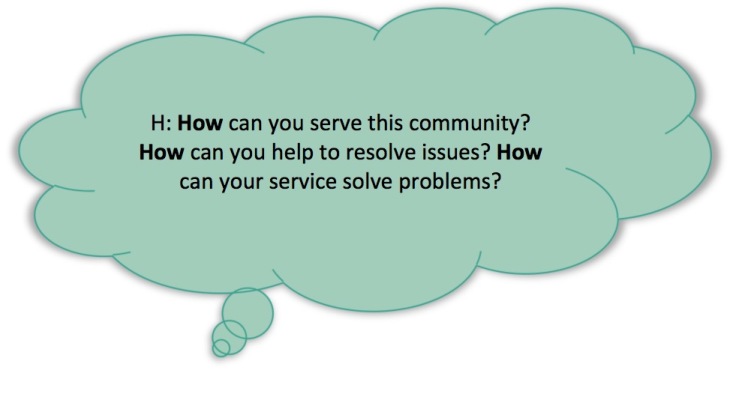
Now, take your learning outside the College walls and actually engage with the community you are going to be serving. The way in which you engage with the community you are serving can be via the following:
- interview
- survey
- email conversations or another medium of your choice.
Remember, you want to gain a deeper sense of empathy for those within the community that you are serving. Dig deep, probe issues and put yourself in their shoes. Practise empathy – it is the key to service and action.
Something to remember when engaging with the community or a member of the community you are serving, as principled learners make sure you respect their rights, dignity and autonomy. This is very important.
“Always leave people better than you found them.” – Anon
Step 2: Now that you have defined the community you wish to serve and have established contact with those you are serving, you need to identify a global context for your Community Project. The global contexts help you answer the following questions:
- why am I engaged in this service?
- why are the issues I am addressing important?
- why it is important for me to serve?
- why should myself and others care about the community I am serving?
In order to identify the most relevant and purposeful global context for your Community Project you need to explore the possibilities of all six of the global contexts. Using our Global Context Lens model, place the Community you are serving and the goal that you are thinking, e.g., fundraising, creating a comic, inventing, etc, within the context of each of the global contexts. Remember we refine our goal through the lens of the global context you have chosen, so make sure that you explore all the possible options.
Questions to ask as you begin to develop your goal through the lens of a global context:
- how does this global context give my Community Project a greater sense of purpose?
- how does this global context help others understand just how important my Community Project is?
- how does this global context cause others to care about the community I am serving?
Once you have chosen your global context you can begin to define your goal.
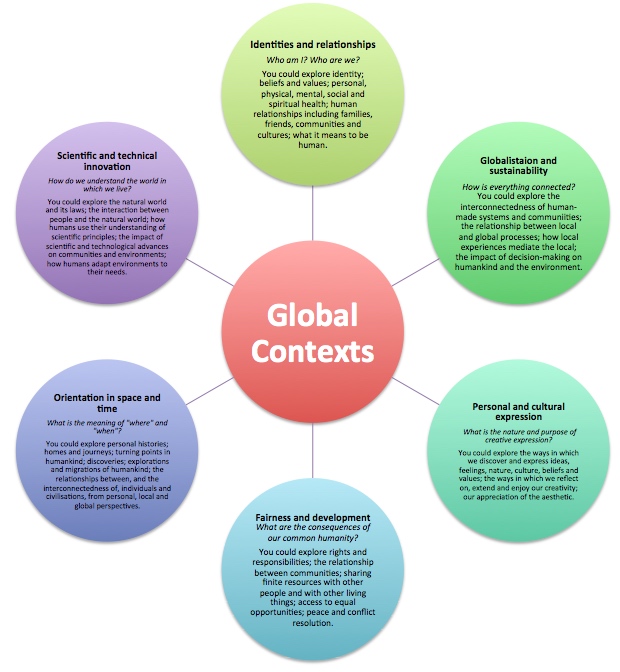
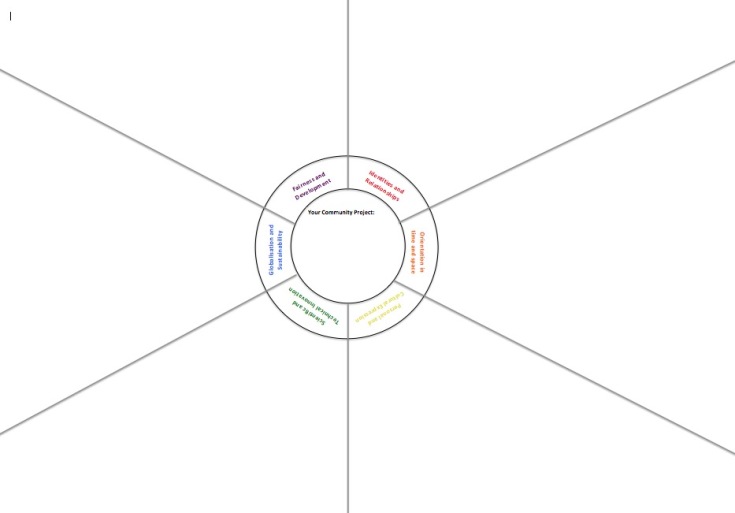
Step 3: The next step of your Investigating is to articulate just how your choice of Community Project is based on personal interest. We always learn best when what we are inquiring into is important to us.
In your process journal explain how your Community Project is based on a personal interest. You can refer to past experiences of yourself or a friend or member of your family. Or your interest can simply be something you have heard about via social media, the news, conversations, etc.
Step 4: Now you need to define the type of service you will be engaging in. Service is expressed in multiple ways and the purpose is always to meet a need. Read through the types of service listed below and identify what type of service you will be engaging in.

Step 5: This next step requires you to synthesize (draw together) Steps 1, 2, 3, and 4 in order to define your goal. You need to create your goal brief by articulating the following:
- what community you will be serving?
- the need within that community you will be meeting?
- what type of service you will be reaching this need through?
- what global context you have chosen for your Community Project and why?
- how this goal is based on your personal interests.
Once you have documented your goal brief in your process journal, send a sample to your supervisor for feedback.
In the next part of Investigating you will:
ii. identify prior learning and subject-specific knowledge that is consistently highly relevant to the project.
Step 1: Now that you have created your goal brief you need to identify prior learning and subject specific knowledge that will help you achieve your goal. Think about the skills and knowledge you already have from clubs, training, independent research and the skills and essential elements of what you have learnt in your MYP subjects and Christian Studies that will contribute to the completion of your Community Project.

In your process journals you need to explain in detail the following:
- what prior learning do you have that will help you complete your Community Project?
- what skills and knowledge from your prior learning can you use to help you complete your Community Project? Be explicit in just how this will help you.
In your process journals you need to explain in detail the following:
- what MYP and Christian Studies subject-specific knowledge do you have that will help you complete your Community Project?
- what skills and knowledge from your MYP and Christian Studies subject-specific knowledge can you use to help you complete your Community Project? Be explicit in just how this will help you.
Once you have documented your prior learning and subject-specific knowledge in your process journal, send a sample to your supervisor for feedback.
In the next part of Investigating you will:
iii. demonstrate research skills.
Although you will do the bulk of your research within the Investigating part of your Community Project, you will continue to research throughout the entire project, so make sure you consistently document your research in your process journal throughout the process. Make your research visible.
Step 1: Using the research model below, you need to begin your research and ensure that you document all your sources in your process journal. Make sure you have both primary and secondary sources.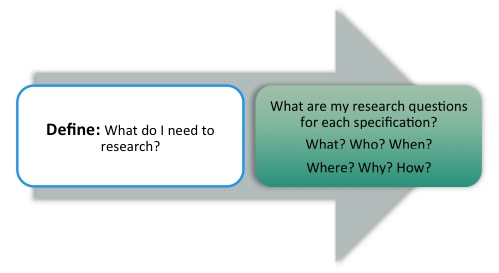




Step 2: Our world is soaked in information, however, not all of this information is accurate. Each source that you have researched, you need to evaluate these sources using the following evaluation skills:
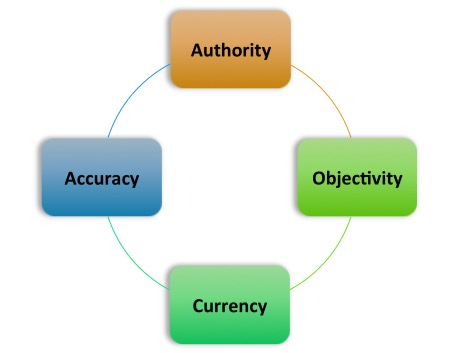
Authority – who is responsible for presenting this information?
- who has written or provided this information and can you check their qualifications?
- is the information from an expert in this area?
Accuracy – is the information accurate, can it be proven and verified?
- is the information correct?
- can you check the accuracy of information through links, footnotes and bibliography?
Objectivity – is the information based on facts, things you can observe or based more on opinions and emotions? Is it from just one point-of-view?
- is there personal bias?
- can you verify that facts, statistics and links to sources are accurate and truthful?
Currency – how old is the information and is this important?
- has the author(s) provided a date for when the information was written?
- has the information been revised or updated, and if so, when?
Make sure you consistently document your research and evaluation throughout the entire Community Project. Research is such a powerful way to gain a deeper understanding of each other, our world and just how we can impact the world for good.
Reflecting on Investigating
The Community Project allows you to demonstrate your developing Approaches to learning (ATL) skills – skills that you need in order to positively contribute to the colourful world in which live.
Take some time to pause and in your process journal, reflect on how you have strengthened your ATL skills.
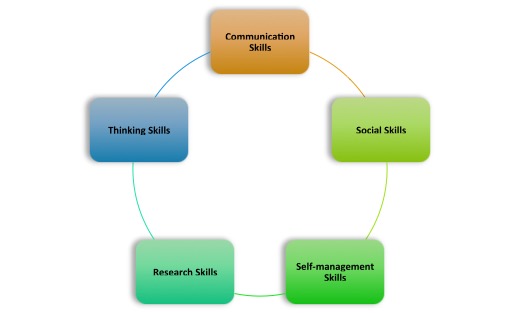
Communication skills:
- How have I developed as a Communicator?
- Through my primary and secondary source research has my ability to exchange thoughts, messages and information through interacting with others improved?
- Has my ability to read, write and use language effectively helped me gather information and communicate this to others?
Social skills:
- How have I developed as a collaborative learner?
- Has my ability to collaborate with others improved?
Self-management skills:
- How have my organisation skills developed?
- How have I been able to develop the way in which I manage my state of mind? Am I more resilient? Can I better manage my emotions?
- How have I developed as a reflective learner?
Research skills:
- How have I developed as a researcher?
- How has my ability to find, interpret, judge and create information improved?
- How have my technology and media skills developed to use and create ideas and information?
Thinking skills:
- How have my critical thinking skills developed? Am I able to analyse and evaluate issues and ideas in a more thorough manner?
- How have my creative thinking skills developed? Am I able to generate new ideas and consider new perspective?
- How have my transfer skills developed? How is my ability to transfer primary and secondary research, classroom learning and “real-life” learning to my product/outcome?
Well done, you have worked through the first part of our Community Project inquiry cycle. Be encouraged, you are making a positive difference in the world.
Planning
Just a reminder: as you continue developing our Community Project, ensure you are keeping two words at the forefront of your mind: Visible Thinking. All your thinking, problem solving, creative response, everything, and I mean EVERYTHING for your Community Project must be documented in your Process Journal. A question to keep in the forefront of your mind is: how am I making my thinking visible?
In this part of Planning you will:
i. develop a detailed, appropriate and thoughtful proposal for action to serve the need in the community.
Now that you have established the goal, global context, prior learning and subject-specific knowledge, and have engaged in extensive research, you now need to create a proposal for action by creating criteria for success for the product / outcome of your Community Project.
To do this you need to create specifications that you will then transfer into criteria for success for your Community Project.
When creating your specifications ask yourself the following questions:
- How will I know when I have achieved my goal?
- How can I judge the quality of my product/outcome?
You need to create a minimum of five rigorous specifications for your criteria.
When creating your specifications you can consider the following options:
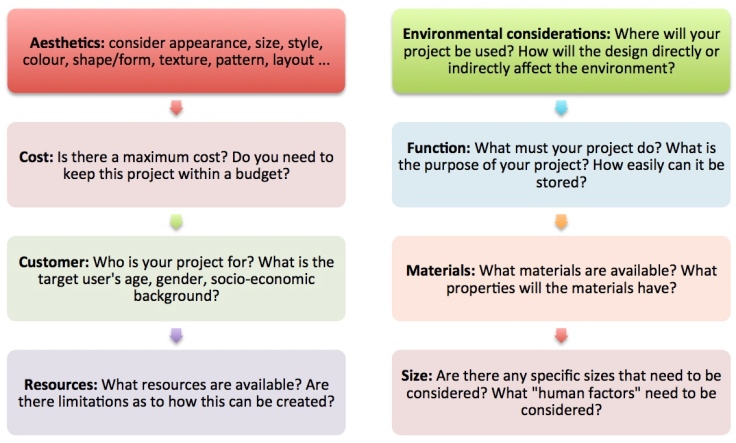
When you have your list of specifications you need to transfer these to criteria for success by thinking deeply about what each specification will look like at the varying degrees of success. This part of our Community Project will require the help of your supervisor. Once you have your specifications ready to go and have shown this to your peers to receive feedback, take these to your supervisor and they will walk you through step-by-step of just how to create criteria for success. (Please see TEDx-Style Talk Exemplar for very brief example of how we create criteria for success at Good Shepherd Lutheran College.)
Once you have created your criteria for success you need to articulate this in the form of a mission statement for your Community Project that will serve as your proposal for action.
Using the following sentence starters, create your Community Project mission statement:
- We are / My name is … from … in the … . (Remember to be proud of your school and where you are from.)
- I/We strongly believe …
- Because I/we strongly believe, I/we plan to …
- My/Our hope is that …
Once you have documented your proposal for action and your mission statement in your process journal, send this to your supervisor for feedback.
In the next part of Planning you will:
ii. present a detailed and accurate plan and record of the development process of the project.
Drawing together your Investigating, criteria for success and your mission statement you now need to create a detailed and accurate plan for the implementation and completion of your Community Project. What you create in this section of our Community Project inquiry cycle will need to be continually reflected on in your process journal.
It is essential that you create an achievable plan for your Community Project. This requires you to forward plan and take into account the timeframe, resources and materials that you need in order to create the product / outcome.
To do this you need to create a Gantt Chart. A Gantt Chart is simply a useful way to plan for a large project, hence, planning for your Community Project. As we have such a large array of devices at Good Shepherd Lutheran College, you can choose the format you wish to create this in. It can even be using good old pen and paper.
Simply place on the left column all the steps that need to be completed in order to create your Community Project. Then along the top, place your timeframe. You can use school weeks or specific dates – it is up to you. As you take action you simply colour in the tabs once you have completed each step.
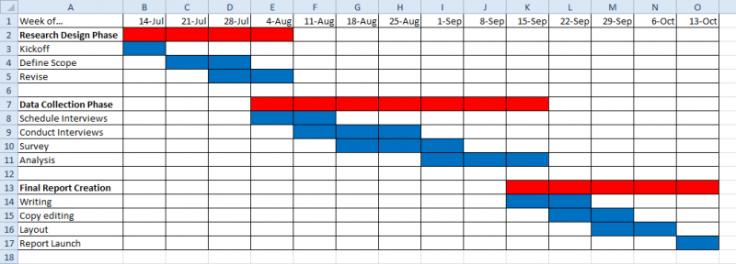
As you take action and create your Community Project, ensure that you reflect on each section of your Gantt Chart. Were you able to follow each step in the planned order? What changes needed to be made? What adjustments have you made? etc.
Once you have this completed creating your Gantt Chart, take a screen shot or photo and send this to your supervisor for feedback.
In the next part of Planning you will:
iii. demonstrate excellent self-management skills.
This part of our Community Project is embedded throughout each step of the project. Self-management skills are ways of organising the actual project as well as organising our state of mind.
In your process journals, ensure you document and make very visible the ways in which you have done the following:
Organisation skills:
- meet deadlines
- stick to your goals
- maintain your process journal with regular updates
- select and use technology effectively and productively.
Affective skills:
- mindfulness – practise strategies to overcome distractions and maintain mental focus
- perseverance – demonstrate persistence and perseverance
- self-motivation – practice analysing and attributing causes for failure and practise positive thinking.
Reflection skills:
- develop new skills, techniques and strategies for effective learning
- keep a journal to record reflections
- identify strengths and weaknesses of personal learning strategies (self-assessment).
In your process journal, document your reflection of your developing self-management skills. Be brutally honest – managing our state of minds is often one of the trickiest things to do. The more we articulate this and work on the best ways to manage our state of mind, the more we help ourselves and others.
Reflecting on Planning
The Community Project allows you to demonstrate your developing Approaches to learning (ATL) skills – skills that you need in order to positively contribute to the colourful world in which live.
Take some time to pause and in your process journal, reflect on how you have strengthened your ATL skills.

Communication skills:
- How have I developed as a Communicator?
- Through my primary and secondary source research has my ability to exchange thoughts, messages and information through interacting with others improved?
- Has my ability to read, write and use language effectively helped me gather information and communicate this to others?
Social skills:
- How have I developed as a collaborative learner?
- Has my ability to collaborate with others improved?
Self-management skills:
- How have my organisation skills developed?
- How have I been able to develop the way in which I manage my state of mind? Am I more resilient? Can I better manage my emotions?
- How have I developed as a reflective learner?
Research skills:
- How have I developed as a researcher?
- How has my ability to find, interpret, judge and create information improved?
- How have my technology and media skills developed to use and create ideas and information?
Thinking skills:
- How have my critical thinking skills developed? Am I able to analyse and evaluate issues and ideas in a more thorough manner?
- How have my creative thinking skills developed? Am I able to generate new ideas and consider new perspective?
- How have my transfer skills developed? How is my ability to transfer primary and secondary research, classroom learning and “real-life” learning to my product/outcome?
Well done, you have worked through the second part of your Community Project inquiry cycle. Up next is the really fun part of the Community Project – Taking Action.
Taking Action
Just a reminder: as you take action and implement / create your Community Project, ensure you keep two words at the forefront of your mind: Visible Thinking. All your thinking, problem solving, creative response, everything, and I mean EVERYTHING for your Community Project must be documented in your Process Journal. A question to keep in the forefront of your mind is: how am I making my thinking visible?
In this part of Taking Action you will:
i. demonstrate excellent service as action as a result of the project.
Drawing together your Investigating and your Planning you now need to put this into action and respond to your proposal for action by actually implementing or creating your Community Project product and/or outcome.
Your process journal should by now be becoming quite full with all your thinking made visible. Within this section it should become even more filled with photographs, screenshots, reflections, annotations, reflection and just all things that capture your journey to service as action – your Community Project.
As you take action in developing your Community Project, remember to take video footage and photos and send this to your supervisor for feedback.
In the next part of our Taking Action you will:
ii. demonstrate excellent thinking skills.
As you place into action your proposal for action to serve the community you have chosen, you need to be making your thinking very visible in your process journal.
The following questions will help you articulate your thinking skills:
- how is your understanding of your community developing?
- are you able to sufficiently help others?
- what obstacles have you encountered?
- how have you solved problems?
- how have you overcome obstacles?
- how have you analysed and evaluated issues and ideas?
- how have you generated novel ideas and considered new perspectives?
- how you have used your knowledge and skills in multiple contexts?
Make sure these are documented in your process journal – remember, the process journal is your means of communicating and making your thinking visible, so we are not worried about the appearance of this. Draw pictures, jot down inspirational quotes, create diagrams, glue printed images and articles in – show the world your process of service as action.
Once you have this documented your thinking skills in your process journal, send a sample to your supervisor for feedback.
In the next part of Taking Action you will:
iii. demonstrate excellent communication and social skills.
Within service as action our communication and social skills often stem from our relationship with others as a result of empathy.
“Empathy is seeing with the eyes of another, listening with the ears of another, and feeling with the heart of another.” – Alfred Adler
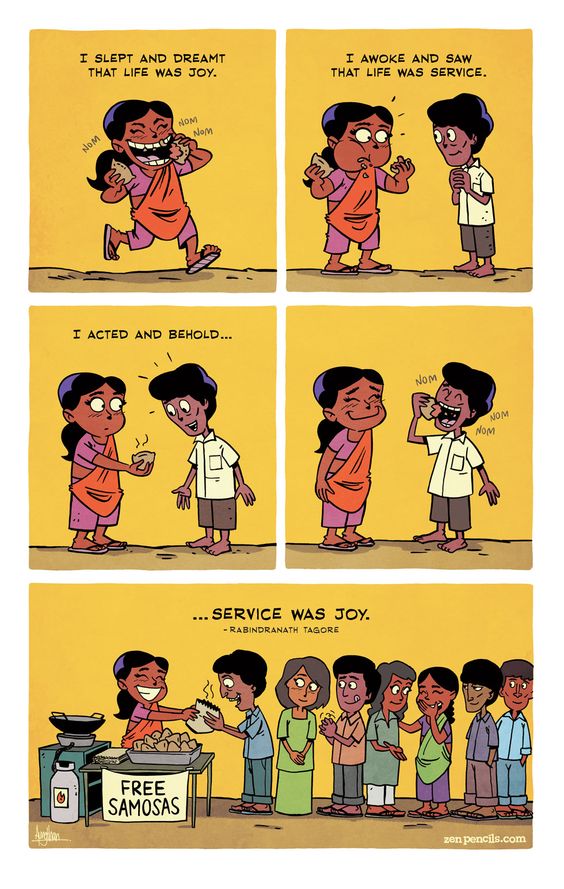
The following questions will help you articulate your communication and social skills:
- how have you developed a deeper sense of empathy?
- how have you managed to resolve conflict, and work collaboratively with others?
- how have you taken responsibility for your actions?
- how have you encouraged others to contribute to your Community Project?
- how have you advocated for other’s rights and needs?
- how have you exercised leadership?
- how have you given and received meaningful feedback?
- how have you negotiated ideas and knowledge with others?
- how have you organised and depicted information logically?
- how have you made inferences and drawn conclusions?
Make sure these are documented in your process journal – remember, the process journal is your means of communicating and making your thinking visible, so we are not worried about the appearance of this. Draw pictures, jot down inspirational quotes, create diagrams, glue printed images and articles in – show the world your journey of service as action.
Once you have documented your social and communication skills in your process journal, send a sample to your supervisor for feedback.
Reflecting on Taking Action
The Community Project allows you to demonstrate your developing Approaches to learning (ATL) skills – skills that you need in order to positively contribute to the colourful world in which live.
Take some time to pause and in your process journal, reflect on how you have strengthened your ATL skills.

Communication skills:
- How have I developed as a Communicator?
- Through my primary and secondary source research has my ability to exchange thoughts, messages and information through interacting with others improved?
- Has my ability to read, write and use language effectively helped me gather information and communicate this to others?
Social skills:
- How have I developed as a collaborative learner?
- Has my ability to collaborate with others improved?
Self-management skills:
- How have my organisation skills developed?
- How have I been able to develop the way in which I manage my state of mind? Am I more resilient? Can I better manage my emotions?
- How have I developed as a reflective learner?
Research skills:
- How have I developed as a researcher?
- How has my ability to find, interpret, judge and create information improved?
- How have my technology and media skills developed to use and create ideas and information?
Thinking skills:
- How have my critical thinking skills developed? Am I able to analyse and evaluate issues and ideas in a more thorough manner?
- How have my creative thinking skills developed? Am I able to generate new ideas and consider new perspective?
- How have my transfer skills developed? How is my ability to transfer primary and secondary research, classroom learning and “real-life” learning to my product/outcome?
Well done, you have worked through the main bulk of your Community Project inquiry cycle. Up next we slow our pace down and begin to reflect on how we have contributed to the community we are serving.
Reflecting
Just a reminder: as you reflect on your Community Project, ensure you are keeping two words at the forefront of your mind: Visible Thinking. All your thinking, problem solving, creative response, everything, and I mean EVERYTHING for your Community Project must be documented in your Process Journal. A question to keep in the forefront of your mind is: how am I making my thinking visible?
In this part of Reflecting you will:
i. present an excellent evaluation of service as action against the proposal.
Let’s flick or scroll back through our process journal to our criteria for success rubric. You need to assess your service as action (what you have created or produced as your product or outcome for the Community Project) by giving yourself a grade against each criteria.
In your process journal you need to explain just why you have given yourself the grade you have. If the grade you have given it not an 8, explain how you could improve your project in order to achieve the top marks. If you have given yourself a grade of 8, make sure you explain why. Remember, as MYP students you always justify your decisions because this helps you continuously strive to be an effective communicator.
Once you have documented your your self-assessment in your process journal, send a sample to your supervisor for feedback.
In the next part of Reflecting you will:
ii. present excellent reflections on how completing the (Community) project has extended your knowledge and understanding of service learning.
In your process journal reflect on 1) how you have extended your knowledge and understanding of just what service learning is; 2) the type of service learning you have engaged in; and 3) how this has changed your understanding of your place in the world. You need to write one paragraph for each of these three reflection points. Challenge yourself and see how you can incorporate at least five of the IB Learner Profile attributes into your reflection.
Once you have documented your your reflections on service learning in your process journal, send a sample to your supervisor for feedback.
In this part of Reflecting you will:
iii. present detailed and accurate reflections on your development of ATL skills.
Throughout the Community Project you have continuously reflected on how you have been developing your ATL skills. In your process journal you need to give your final ATL reflection and use examples from your process journal as evidence of how you have developed your ATL skills. This can simply be a copy and paste, or a notation to see a particular page in your Process Journal. (If this is the case, make sure you number the pages of your Process Journal).
Make sure you clearly explain each of the five ATL skill categories in the cycle below.

Communication skills:
- How have I developed as a Communicator?
- Through my primary and secondary source research has my ability to exchange thoughts, messages and information through interacting with others improved?
- Has my ability to read, write and use language effectively helped me gather information and communicate this to others?
Social skills:
- How have I developed as a collaborative learner?
- Has my ability to collaborate with others improved?
Self-management skills:
- How have my organisation skills developed?
- How have I been able to develop the way in which I manage my state of mind? Am I more resilient? Can I better manage my emotions?
- How have I developed as a reflective learner?
Research skills:
- How have I developed as a researcher?
- How has my ability to find, interpret, judge and create information improved?
- How have my technology and media skills developed to use and create ideas and information?
Thinking skills:
- How have my critical thinking skills developed? Am I able to analyse and evaluate issues and ideas in a more thorough manner?
- How have my creative thinking skills developed? Am I able to generate new ideas and consider new perspective?
- How have my transfer skills developed? How is my ability to transfer primary and secondary research, classroom learning and “real-life” learning to my product/outcome?
Congratulations – you have nearly completed your Community Project.
We now simply need to organise our Community Project presentations in the form of a TEDx-Style Talk and an appendices with evidence from your process journal to support your TEDx-Style Talk.
Presenting the Community Project
Now that you have finalised your Community Project and your Process Journal is filled with your service and action journey. You need to prepare for your Community Project presentation. The way in which we present our Community Project at Good Shepherd Lutheran College is through a TEDx-Style Talk with accompanying appendices.
Community Project Presentation Graphic Organiser
Using this Community Project Presentation graphic organiser, you need to take all your documentation and the thinking you have made visible in your Process Journal and share this through a TEDx-Style Talk that you will share with the College community. The following guidelines need to be followed:
- Individual student presentations (TEDx-Style Talk): 6 – 10 minutes
- For a group presentation (TEDx-Style Talk collaboratively presented): 10 – 14 minutes (each presenting for an equal amount of time)
Your TEDx-Style Talk will be a presentation so ensure that you have visual aids such as a PowerPoint, Prezi, image slide show, short video footage, etc.
Once you have finalised writing your report you need to provide evidence from your process journal against every strand of your Community Project inquiry cycle journey. For e.g., in Investigating when you were developing your global context, include the page where you explained how the global context gives your Community Project greater significance and meaning; in Planning you have had to plan and record the development of the process of your project, add your Gantt Chart and a couple of reflections of the process of completing the Community Project, etc.
The best way to think of your appendices is in terms of evidence – you want your appendices to demonstrate how you have make your thinking visible and to verify that the work you are presenting is definitely yours.
Here is an exemplar for the TEDx-Style Talk Script and Appendices: Community Project Presentation Exemplar (This is a limited exemplar, please simply use for ideas of how to articulate your thoughts.)
On the day of your presentation you need to submit to your supervisor the following:
- The script for your TEDx-Style Talk
- A completed Academic Honesty Form (your supervisor will have this)
- Process Journal Extracts – your appendices
- A bibliography of all your sources
- Any supporting visual aids that you have used in your TEDx-Style Talk (Keynote, Prezi, video, etc.)
Remember to stand tall and stand proud when presenting your Community Project – you have done an amazing job and should be so proud of yourself.

Great, love it Laura! Thanks.
LikeLike
Very detailed CP guide! Thanks for sharing, Laura.
LikeLike
You are more than welcome!
LikeLike
Thank you for sharing! Love it !
LikeLike
Wonderful CP guide, truly helpful!
LikeLike
Kia ora
We are in a Community Project workshop and have just read through this webpage – outstanding!
Are you able to send through an example of a rubric for success criteria?
Cheers
LikeLike
Hi Geoff,
Of course I can – happy to help in any ways I’m on holidays at the moment and have left my laptop at home. I’ll send one through as soon as I get back.
Cheers,
Laura
LikeLike
this is truly amazing Laura!
LikeLike
This is wonderful! Thank you so much for contributing to the improvement of the Community Project around the world! You rock!!
LikeLiked by 1 person
I think I saw somewhere that you had a presentation for the projects? Are you willing to share? Thank you!
LikeLike
Hi Hillary, do you mean like a presentation for parents?
LikeLike
Thanks for posting this – it’s great to see everything so clearly and concisely articulated. Certainly gets the brain going!
LikeLiked by 1 person
thank you for this most important information
LikeLiked by 1 person
so wonderful lovely
LikeLike
This is such a thorough overview of the community project. I like so many of the ideas and the approaches to help support the students.
LikeLike
Thank you! I’ve just finished writing the IB MYP Skills for Success: Community Project book too!
LikeLiked by 1 person
The layout is beautifully laid out!! Did you receive my last reply inquiring about an editable version? Thank you for your time.
LikeLiked by 1 person
Hi Terry, I’m more than happy to send them. Please just send your email address. Laura!
LikeLike
Thank you for making this!
LikeLike
Thank you for sharing this information in this format. I am a candidate school and we are implementing the MYP year by year. We are now brainstorming how to organize the Community Project to introduce it in September to our new MYP 3 students. Exciting times!
LikeLike
Thank you for sharing this information in this format. I am working at an MYP candidate school and we are implementing the MYP year by year. We are now brainstorming how to organize the Community Project to introduce it in September to our new MYP 3 students. Exciting times!
LikeLike
It’s a beautiful project! We’ve published a book for it too via Hodder and Staughton!
LikeLike
Hi, misslauraengland,
May I please ask you for the name of the book? Thank you in advance!
LikeLike
Of course. It’s Skills for Success: MYP Community Project.
LikeLike
Thank you! Going online to buy it now!
LikeLike
I hope it is super helpful for you 🙂
LikeLike
Always enjoy coming back to read/review your blog. Looking for interesting ways to create success criteria. Any resources you could share?
LikeLike
Hi Ernie, sorry for the delay! We’ve popped a few approaches into our Hodder books – my fav is pathways to success.
LikeLike
Hi Laura,
I love this! We are doing our first community project, and I too would love to have an outline that we could edit and any rubric that might go along with this! I’m at alicia.giguere@ecoleprinceton.org
Thank you in advance for any help!
LikeLike